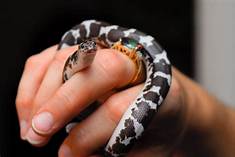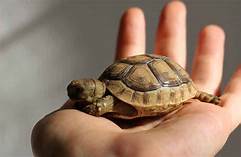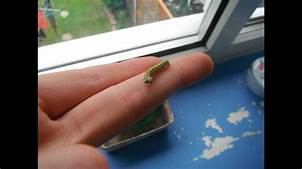How to Care for a Pet Snake
Snakes make fascinating and rewarding pets. They come in diverse species, sizes, and colors, offering unique personalities and behaviors. However, before bringing a snake into your home, it's essential to understand their specific needs and responsibilities. Here's a comprehensive guide on how to care for a pet snake:

Enclosure
1. Size: Choose an enclosure that's appropriate for the size of your snake. As a general rule, the enclosure should be at least twice the length of the snake and wide enough to allow it to stretch out fully.
2. Substrate: Provide a substrate that's safe and comfortable for your snake to burrow and move around in. Common options include aspen shavings, coconut fiber, and cypress mulch.
3. Temperature: Snakes are ectotherms, which means they rely on external heat sources to regulate their body temperature. Maintain a warm side and a cool side in the enclosure to allow your snake to choose its preferred temperature.
4. Humidity: Many snake species require specific humidity levels to stay healthy. Use a hygrometer to monitor humidity levels and provide a water bowl or humidifier to maintain the desired humidity.
Diet
1. Feeding Schedule: Determine the appropriate feeding schedule based on the type of snake you have. Some snakes eat once a week, while others may need to be fed more or less frequently.
2. Prey Size: Offer prey that is an appropriate size for your snake. As a general guideline, the prey should be no wider than the widest part of the snake's body.
3. Variety: Provide a variety of prey items to ensure your snake gets a balanced diet. Common prey items include rodents, fish, and insects.
Handling
1. Approach: Always approach your snake calmly and avoid sudden movements. Snakes can be easily startled and may bite if they feel threatened.
2. Support: Gently support your snake's body when handling it. Avoid grabbing the snake by the tail, as this can cause injury.
3. Frequency: Regular handling can help build trust between you and your snake. Handle your snake for short periods initially and gradually increase the duration as it becomes more comfortable.
Cleaning and Maintenance
1. Substrate Changes: Regularly change the substrate in the enclosure to keep it clean and free of waste. This helps prevent bacteria and parasites from accumulating.
2. Water Bowl: Clean the water bowl daily and provide fresh water. Snakes need access to clean water at all times.
3. Enclosure Cleaning: Clean the entire enclosure thoroughly every few months using a mild disinfectant. Rinse the enclosure thoroughly before reintroducing your snake.
1. Choosing a Species: Research different snake species before deciding on one. Consider factors such as size, temperament, and care requirements to find the right snake for your experience level and lifestyle.
2. Veterinary Care: Take your snake to a qualified veterinarian for regular checkups and treatment if needed. Preventative care is essential for keeping your snake healthy and happy.
3. Safety Precautions: Keep your snake's enclosure secure and out of reach of children or other pets. Snakes can be escape artists, so ensure the enclosure has a tight-fitting lid.
Caring for a pet snake requires dedication and responsibility. By providing appropriate housing, diet, handling, and maintenance, you can ensure your snake thrives in captivity and enjoys a long, healthy life.
Declaration: All article resources on this website, unless otherwise specified or labeled, are collected from online resources. If the content on this website infringes on the legitimate rights and interests of the original author, you can contact this website to delete it.






